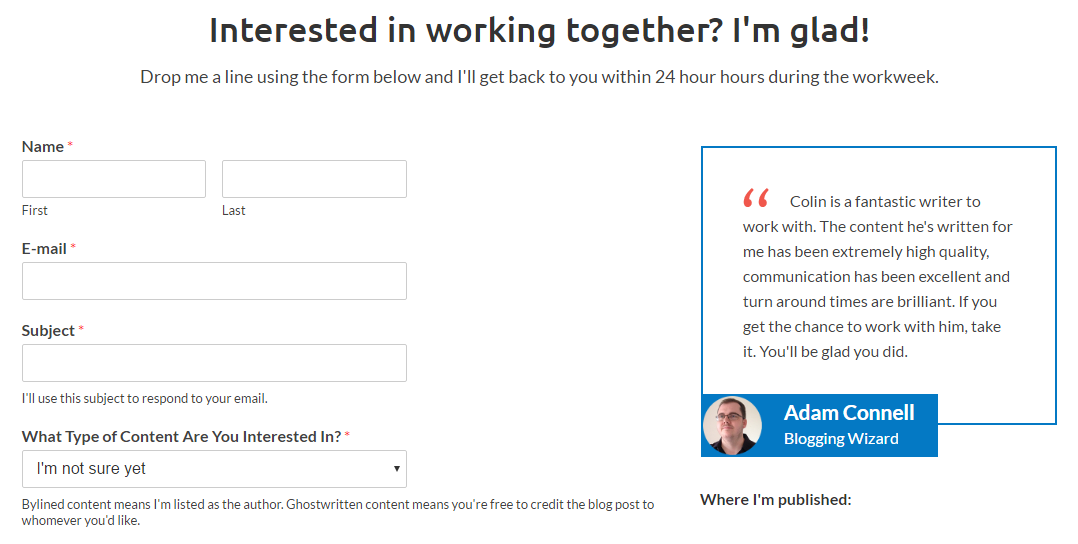If you’re reading this article, you’ve probably completed step #1 of the journey to becoming a successful web professional:
Finding clients.

But as much as we all wish it weren’t otherwise, the journey is not over once you find someone interested in paying you for your services. Not by a longshot.
Nope…now you’re in for the hard part – managing your client relationships so that:
- Your clients are happy.
- You don’t go insane (this is the most important one, even if we forget it sometimes!).
See, managing clients is a tightrope act. On one side, you want to do everything possible to keep your client happy. But on the other side, you don’t really want your client trying to Skype call you at 10 pm on a Saturday night, do you?
Yes, there are plenty of amazing clients who respect your time and are easy to work with…but there are just as many overly demanding, make-you-want-to-pull-your-hair-out clients out there. I’m pretty sure we all have a few war stories to tell on that front.
In this post, I want to delve into how you can better manage clients. But I’m going to come at it from both sides of the coin. Ideally, at the end of this post, you’ll know how to make your clients happy while still maintaining your own happiness.
How to Keep Your Clients Happy
Ok, without happy clients, there’s no bread on the table…which isn’t great for your sanity in its own right. So beyond the obvious advice of just plain delivering quality work and being professional, here are some tips for keeping your clients happy…
Send Out Proactive Project Updates
Something I’ve found helpful in my own freelance career is shooting out proactive email updates to my clients.
By that, I mean a quick message to the effect of “I just want to let you know I’ve completed X step of the project and will have it submitted to you on Y as promised”.
Yes, if you already have established deadlines, your client should expect that you’ll have it done. But when you’re not working face-to-face, it’s easy for clients to get antsy about whether or not you’ll actually meet the deadline. These short messages nip that problem before it festers.
Best of all, update emails should take less than a minute to fire off to your client. So, don’t let doubts linger in your clients’ minds. Check in and keep them updated – I promise that they’ll appreciate it.
Always Under Promise and Over Deliver
This one is simple and you’ve probably heard it before, so I won’t go too deep here.
The idea is this:
If you think a task will take 7 days, never tell your client that it will take 7 days. Tell them it will take 10 days. Or 14 days. That’s even better!
This accomplishes two things:
- If you’re correct in your assumptions, you look like a superhero for delivering the project early.
- If you’re wrong, you have a built-in buffer to still complete the project on time.
Go Beyond The Call of Duty
Don’t get angry yet – I would never advocate going beyond scope for free. That’s a fool’s errand. But what I mean is this:
You’re familiar with the Internet. That probably gives you a broader base of knowledge about the web than your client. And you can use that to make them happy. Let’s look at an example…
Even if you’re not an SEO expert, there’s a good chance you know more about SEO than your client. So if you see an SEO disaster in the making during the course of your regular work, don’t be afraid to let your client know.
All it really takes you is the time to type up an email or mention it during a client call. But to your client, it looks like you’re going above and beyond to ensure their success.
Naturally, that makes them pretty happy. And it also moves you more towards being a consultant instead of a commodity.
I regularly give my clients advice and opinions beyond the scope of writing. In my personal experience, the vast majority of clients appreciate the help.
Just make sure you apply some common sense here – if your client doesn’t seem receptive the first few times you make a suggestion, adjust accordingly.
How to Keep Yourself Sane
If the only way you’re keeping your clients happy is responding 24/7 via all communication channels, you’re going to burn out. Maybe not at the beginning. But I promise that it will happen to you eventually.
So don’t do that. Instead, follow these tips. As long as you establish them early on, your clients won’t hate you, and you’ll stay much happier.
Limit Communication Channels
I remember back when I first started freelancing…
On my Contact Me page, I had my contact form, my email, my Skype, my Twitter, my GPS coordinates to send a carrier pigeon, my…you get the point.
I thought, “I’m gonna put myself out there and always be available for clients. That way, they’ll love me”. That was a great idea…until I got my first Skype message on a Saturday night. And then a second message ten minutes later when I hadn’t responded. Oops.
Do you know what’s on my Contact Me page now? A single, solitary contact form:

Yeah, that’s all potential clients get.
From that contact form, I try to limit as much of my client communication as possible to email or Trello. You might prefer a different communication method. That’s totally fine. But my experience has taught me that it’s a good idea to always follow two rules:
First, choose your desired contact method and stick to it. If you like Skype, funnel everything towards Skype and keep it there.
Second, make it a separate channel from your personal accounts. For example, if you have a personal account to Skype friends and family, create a second Skype account strictly for business. That way, you won’t get bombarded with work messages just because you want to Skype your family on the weekend (another thing that happened to me back when I started freelancing!)
As a tertiary benefit, sticking to defined communication channels also makes it easy to go back and check past conversations in case you forget a specific detail of the project.
…And Limit Response Time Expectations
I didn’t tell the full story about my contact page. See, in addition to removing all of those extraneous contact methods, I also added another message immediately after a person submits my contact form.
It says, roughly, “thanks for your message. I’ll respond within 24 hours excluding the weekends”:

See, if you try to be available 24 hours a day, you’re going to burn yourself out. That’s the honest truth.
But plenty of clients will expect you to respond to messages at odd hours of the day…unless, that is, you establish proper communication expectations at the beginning of the relationship.
So, find a level of availability that works for you, and then communicate those expectations early on. I’ve never encountered a client who minded waiting 24 hours for a response…as long as I established it at the beginning of the working relationship.
You do need to communicate it early, though. Because if you suddenly go from responding in 2 hours to responding in 24 hours, clients are naturally going to feel a little miffed.
Keep Yourself Organized
The final method I’ve found for maintaining sanity is this:
Implement an organizational process and follow it for all of your clients. The absolute best way to stay on top of client relationships is to have every deadline and meeting spelled out in one location.
I’m not going to recommend a specific process because it seems like everyone has their own preferred method. Personally, I like Todoist, but I know plenty of others who prefer more feature-rich project management tools like:
The specific platform isn’t what matters. Having a tool and process that you follow is.
The quickest way to introduce client-related stress into your life is to miss a deadline that you completely forgot about.
Wrapping Things Up
In addition to everything I laid out above, I hope you’re following the basics of successful client management:
- Getting a signed contract for large projects.
- Clearly discussing scope.
- Delivering good work.
But once you’ve got those covered, these tips are my battle-hardened suggestions for making your clients happy and creating a happy, burnout-free, life for yourself.
If you have any other tips for managing client relationships, I’d love to hear them. Because, in addition to helping other people who read this post, I always love to streamline my own processes!

Leave a Reply